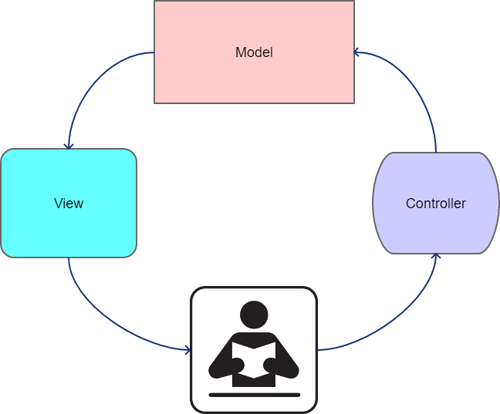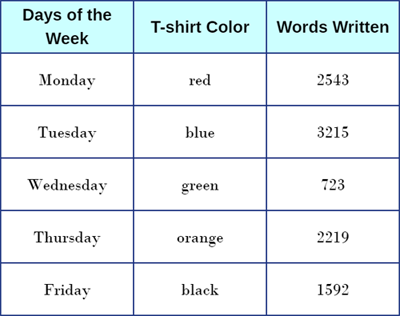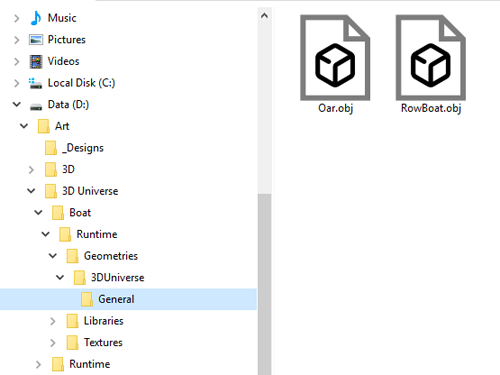0048: MVC Part I - Introduction to the Model-View-Controller
Before we start…

There won’t be any code examples today, just lots of theory. Yeah, it’ll be a lot to take in, but you might consider it a reference to use over the next four weeks as we wade through all this stuff. So, without further ado…
Today begins an exploration of a bunch of GTK widgets that use the Model-View-Controller (MVC) architectural pattern. In case you don’t know, in an MVC system, the user is presented with a UI to Control data in a Model which then updates the View (the UI). It’s a circular and flexible system wherein the View shows either some or all of the data stored in the Model. Also, a single behind-the-scenes Model can have its data displayed in more than one View, either simultaneously or by switching out one View for another.
Let’s look at these pieces one at a time starting with…
The Model

‘Model’ is just another way of saying, “a system for storing data.” At its simplest, a Model is a single column—say, the days of the week. But if we add more columns showing a T-shirt color for each day, the number of words written per day, or whatever other data you may need to track, the Model now has columns and rows which constitutes a table. So in short, a Model is a table for storing data.
In GTK parlance, a Model is referred to as a TreeModel but, we rarely deal with the TreeModel directly unless we’re getting down-n-dirty. Instead, we instantiate one of the two storage objects derived from it…
The ListStore and TreeStore

In a nutshell, these two classes are expressions of the TreeModel with the following individual characteristics:
- the
ListStoreis a flatTreeModelwith no hierarchy—a plain table as is shown in Figure 2 above, in other words, and - the
TreeStoreis a hierarchicalTreeModeland its rows may contain descendant rows (see Figure 3 below).
If it helps… the TreeStore is like a file browser in that any level can contain files and directories and those directories may contain other files and directories, etc., etc., ad infinitum.
The Controller – Data Access Widgets
Because TreeModels have rows and columns, we access the data as… well, rows or columns. To access columns, we have one widget, the TreeViewColumn, but for accessing rows, we have two:
- the
TreeIter, and - the
TreePath.
And there’s a subtle, but important, difference between the two…
The TreeIter
The TreeIter is a direct reference to a specified row in a ListStore. It’s used for stuffing data into or retrieving data from a ListStore, one row at a time. The functions most often used for these operations are setValue() and getValue() respectively.
However, because it’s a direct reference, a TreeIter may only be valid for a short time depending on whether or not the ListStore (or TreeStore) has had rows added or deleted. Also, it can only be used with the Model (ListStore or TreeStore) and not the View.
The TreePath
The TreePath is not a direct, but rather a logical reference to a row number and the same TreePath is valid for both the Model and View.
The View: TreeView
This is the last of the acronym letters and it’s the visible widget that presents data to the user. Data is laid out in—yeah, that’s right—columns.
And that leads us to the visible mechanisms that give the user control over the data. They are:
- the
TreeViewColumn, and - the
TreeSelection.
The TreeViewColumn
This object can be used to access column properties such as:
- the column header (which includes:),
- the column’s name,
- whether or not the header acts as a button for sorting,
- how the cells in a column are rendered (font, color, etc.),
- any and all
CellRenderers used to dress up column data. They can be:CellRendererCombo,CellRendererPixbuf,CellRendererProgress,CellRendererSpin,CellRendererSpinner,CellRendererText, andCellRendererToggle.
As you may guess from this list, we have a lot of choice as to what can be crammed into a column, either as primary data, companion data, or even functionality.
Something to note is that numbers are displayed as text, but despite that, because the View and Model are separate entities, numbers are stored as integers, floating point, or what-have-you. It’s only when they’re displayed in the View that they’re treated as strings.
Multiple CellRenders can be stuffed into a single TreeViewColumn making it possible (if you wanna go so far) to decorate each row within the column in its own way or mix decoration and functionality in a single column.
Note: CellRenderers are not exclusively for use by TreeViewColumns or, indeed, the TreeView. We’ll see them again later when we dig into Cairo, GTK’s vector-based graphics library.
The TreeSelection
This mechanism tracks such things as:
- which row or rows are selected, and
- which
SelectionModeis set:NONE,SINGLE,BROWSE, orMULTIPLE.
The SelectionMode enum is defined in generated/gtkd/gtk/c/types.d.
And Finally, the MVC Widgets
Here’s a list of the widgets that make full use of the MVC architectural pattern. We have:
- the
TreeView.
Only one? Well, yes, but there are two others that have very similar features and they are:
- the
ComboBox, and - the
ComboBoxText.
But the difference is:
- the
TreeViewuses theTreeViewColumndirectly, whereas - the
ComboBoxandComboBoxTextimplement theCellLayoutinterface which in turn uses theTreeViewColumn.
This difference between these two uses of the TreeViewColumn is minimal, but it allows us to take on this collection of widgets one at a time and get used to each separately before tackling them all in one example.
Other classes that implement the CellLayout interface are:
CellView(which works in conjunction withCellAreaandCellAreaContext),IconView(an alternative view of data using icons and labels, similar to a file browser with all details hidden), andEntryCompletion.
But those are more of a Model-View (MV) implementation. And finally, there’s one other class that implements MVC and that’s:
FontSelection, which is used in theFontSelectionDialog.
We’ll get into all this eventually, but for now, you have a more-or-less comprehensive list of all GTK Widgets that implement MVC in one way or another.
Conclusion
And that’s the lowdown on GTK’s version of the Model-View-Controller architectural pattern. Next time, we’ll start off with the simplest of the widgets that follow this paradigm, The ComboBoxText. See you then.
Comments? Questions? Observations?
Did we miss a tidbit of information that would make this post even more informative? Let's talk about it in the comments.
- come on over to the D Language Forum and look for one of the gtkDcoding announcement posts,
- drop by the GtkD Forum,
- follow the link below to email me, or
- go to the gtkDcoding Facebook page.
You can also subscribe via RSS so you won't miss anything. Thank you very much for dropping by.
© Copyright 2025 Ron Tarrant
